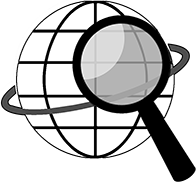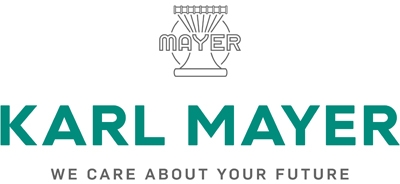How WEFTTRONIC® II G with ITMA upgrade maximizes customer benefits
At the ITMA 2023 in Milan, KARL MAYER Technische Textilien presented its successful model in the weft machine sector, the WEFTTRONIC® II G, with sensational upgrades, thus demonstrating market intuition. "We were able to record a super response. Especially on the first day of the trade show, the number of visitors was surprisingly high," Sales Manager Hagen Lotzmann sums up with satisfaction. The reason for the high visitor interest was innovative machine features: the new VARIO WEFT laying system, a solution for stabilizing the selvedges, monitoring of weft tension and a central suction device. The WEFTTRONIC® II G was shown at ITMA in a working width of 213″, the best-selling working width for geogrid production.
More patterning freedom
VARIO WEFT in particular excited customers by revolutionizing weft patterning. The innovation makes pattern changes in the weft extremely simplified, faster and more flexible. The electronic solution requires no mechanical intervention during thread take-up and knows no limitations in terms of repeat length. In addition, there is considerably less edge waste.
The basis for the thick advantage package is a newly conceived patterning principle: Whereas weft feeders and transport warps previously worked with one weft thread insertion according to the desired patterning, a full insertion is now always used. A stop-and-go operation of the transport chain and a new movement curve of the feed dog ensure that the yarn is fed according to the pattern. If a weft yarn is to be inserted into the fabric, it is guided to the knitting position by the circulating transport chain and brought into the engagement area of the slider needles by the rapier. If a free position is to be created in the fabric, the transport chain stops and the rapier dips under the weft yarn. "The mobility that VARIO WEFT offers in weft patterning is completely new for our customers. In the discussions on this during the ITMA, potentials were explored and thought processes initiated. We are expecting many new product ideas, and we will be on hand to help our customers implement them," explains Hagen Lotzmann.
Reduced costs and environmental impact
With the elimination of the free positions in the transport chain, the waste generated here is also eliminated. In the conventional process, the weft yarns are transported past the vacant positions, and the yarn sections running in the working direction have to be disposed of, with negative effects on costs and the environmental balance. The relative yarn waste is greater the more positions have to be bridged and weft yarns inserted, i.e. the more open the mesh pores and wider the webs. However, when considering the absolute savings potential, the number of weft threads in the fabric must also be taken into account.
For example, with a weft thread insertion of 5 full, 10 empty, around 61% less material is required. This results in about 38 TEUR less costs and about 256,000 kg less CO2 emissions per year. In the case of denser lattice designs with an intake of 2 full, 2 empty, the material savings are lower at just under 46 %, but the absolute annual savings in costs are approx. 40,000 and CO2 emissions are higher at almost 270,000 kg.
Stable selvedges
Another innovation of the WEFTTRONIC® II G stabilizes the fabric selvedges and uses the weft ends for this purpose. The weft yarn ends protruding laterally at the fabric selvedges are mechanically and by means of air flow reintroduced into the knitting point and here firmly bound into the fabric structure by means of a mesh.
The fabric selvedges thus stabilized enable the fabric selvedges to be better fixed during the finishing process - an advantage especially for medium-weight and heavy geotextiles. This allows the shrinkage behavior of the weft knitted fabric to be adjusted in a controlled manner and its quality to be improved. New areas of application can also be opened up thanks to the consolidated edge structures, for example in the fields of slope stabilization and safety nets.
Controlled yarn tension
To maximize fabric quality, the WEFTTRONIC® II G has been equipped with a system for monitoring weft yarn tension. The new solution keeps an eye on each individual yarn and triggers actions when threshold values are exceeded or undershot: first a warning, then machine shutdown.
When retooling for new patterns, the weft tension can be easily adjusted and controlled, thus improving the reproducibility of product quality. In addition, the tension data can be stored for control and traceability of production jobs.
Automatic suction in non-stop operation
A new assembly for suctioning off edge waste, the CSD 600, focuses on increasing machine efficiency. The innovation picks up weft residues continuously during machine operation and uses stops caused by operation for fully automatic emptying, completely without manual intervention. In addition, less electrical energy is required compared to the previous solution with one suction cabinet on each side of the machine. The savings potential is around 8 %.


